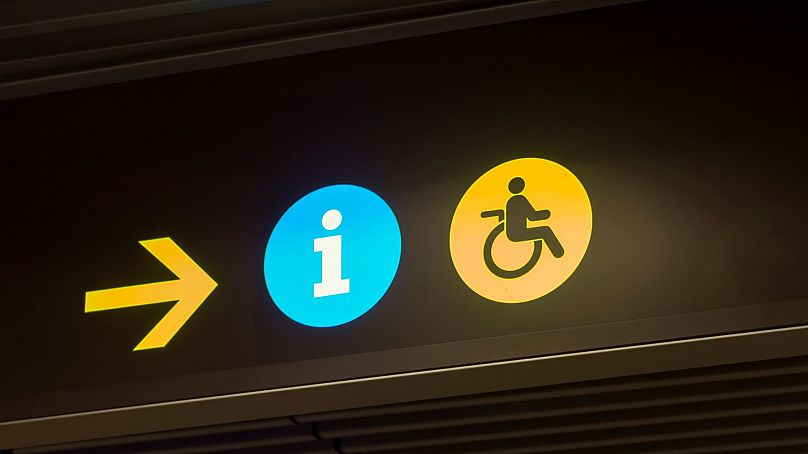Flying can be a stressful experience for wheelchair users but that could soon change with the results of this new study.
Manoeuvring over armrests and tray tables to transfer into a narrow airline seat can be a discouraging ordeal for many wheelchair users.
But changes that would encourage some wheelchair users who choose not to fly to take to the skies are possible, according to a new study by the National Academy of Sciences in the US.
They took a look at the 6,000 passenger aircraft currently operated by US airlines including Boeing 747s and Airbus A320s.
Though it would require significant design and engineering, the report found it was technically possible to modify the cabin in these planes to accommodate personal wheelchairs.
In most aircraft, removing two rows of seats at the front of the cabin near the boarding door would free up enough room.
Professor Alan Jette, chair of the committee that wrote the report says their research showed no challenges “so formidable” that they would prevent personal wheelchairs being allowed on flights in the future.
“Closing the remaining information gaps — particularly about safety — would enable more-informed public policy decisions that meet the needs of airlines, their personnel, and people with disabilities,” he added.
How would this help wheelchair users who don’t fly?
Unlike on many trains, buses or in cars, aeroplane passengers are currently unable to use their personal wheelchairs as a seat. For some, this means making long journeys to visit family, go to medical appointments or simply travel abroad is either impossible, costly or unsafe.
But flying with their own personal wheelchairs could revolutionise the travel experience for many wheelchair users.
“If passengers had the ability to fly while seated in their personal wheelchair that is customized for their medical and physical needs, they could avoid the hardships of flying and be able to use their own wheelchair at their destination,” says Jette.
“Equipping aeroplanes with wheelchair securement systems is an intuitively appealing solution to many of the hardships that people with disabilities and who are nonambulatory face when flying.”
The report also found that, because seating does not consider their needs, many disabled passengers are uncomfortable during flights.
Some avoid flying altogether due to worries about serious injuries when transferring into the aeroplane seat or concerns that their personal wheelchair will be lost or damaged.
Solutions won’t be found overnight
Josh Grisdale, the creator of Accessible Japan, has had his wheelchair damaged twice and, while he loves travelling, long flights are very difficult due to the seats.
“Imagine sitting in one position for 13 hours from Toronto (my hometown) to Tokyo (current residence). Not fun,” he explains.
“Discomfort also means I cannot sleep on the plane and am exhausted when I arrive.”
He says that allowing personal wheelchairs on planes would remove a lot of the stress from flying and bring back many potential fliers who have given up travelling.
Grisdale adds that concerns over lost revenue for airlines from removing seats shouldn’t be a barrier. There may be other solutions and more studies need to be done, he says. Solutions won’t be found overnight.
“Most changes start with resistance and often end with a situation that is better for everyone in the end.”
People with disabilities have a strong loyalty to brands that are accepting, Grisdale points out. There are many people who want to travel in their wheelchairs and it is an underdeveloped market.
“I would be willing to pay for a premium airline with this adaptation over saving money for a cheaper, unadapted seat.”












